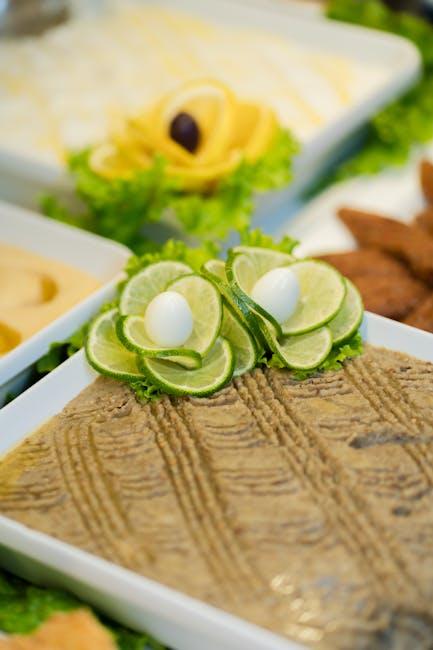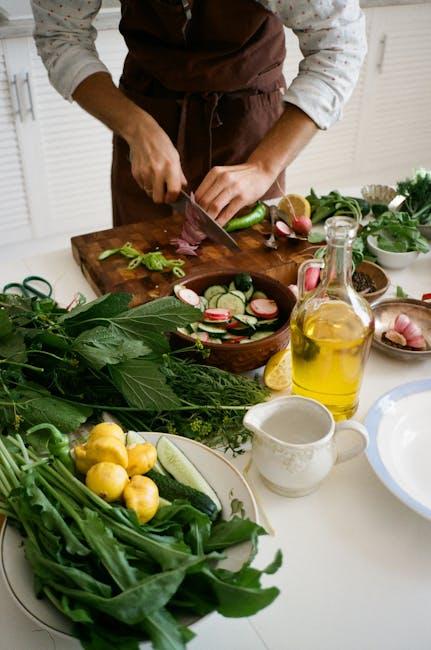In the quiet hum of a kitchen, where the aroma of coffee mingles with the morning light, much of our daily ritual unfolds beneath the surface of awareness. These subtle, subconscious routines-reaching for a favorite mug, chopping vegetables in a familiar rhythm, or instinctively wiping a countertop-shape not only how efficiently we navigate our kitchen spaces but also how these environments influence our habits and mood. Exploring these hidden patterns offers a fascinating glimpse into the intimate choreography between mind, body, and space that transforms a simple room into the heart of a home.
Understanding the Hidden Patterns Shaping Your Kitchen Behavior

Every time you step into your kitchen, a silent script plays out in your mind, guiding your hands and movements without conscious thought. These unseen patterns often dictate everything from where you reach for the coffee mug to how you organize your spices. Understanding these hidden routines can reveal much about your personality, habits, and even emotional triggers. For example, the preference to keep the knife block near the stove highlights a subconscious prioritization of efficiency, while the repeated habit of grabbing the same yogurt container reflects comfort and familiarity in a bustling environment.
These ingrained behaviors can be categorized into several fascinating clusters:
- Efficiency-Driven Actions: Moving in loops to avoid backtracking while cooking.
- Comfort Zones: Constantly using particular spots for certain ingredients or tools.
- Emotional Cues: Reaching for comfort foods during stressful moments without realizing it.
| Pattern Type | Behavior Example | What It Reveals |
|---|---|---|
| Habituated Reach | Always grabbing the same cup | Preference for familiarity |
| Movement Loop | Walking the same path when prepping meals | Mindset oriented towards efficiency |
| Emotional Trigger | Snacking on sweets after a tough day | Emotional comfort seeking |
The Role of Design and Layout in Shaping Subconscious Actions

Every time you step into a kitchen, your movements are subtly guided by its design and layout, often without you realizing it. The placement of countertops, appliances, and storage influences the flow of motion, turning moments such as grabbing a morning cup of coffee or preparing a family dinner into almost automatic sequences. Thoughtfully arranged zones for cooking, cleaning, and prepping create invisible pathways that streamline your actions, reducing friction and allowing your subconscious to operate on a well-tuned routine. Small details like the height of a shelf or the distance between the sink and stove can shape decisions and lead to more efficient or relaxed experiences.
Consider how a kitchen layout fosters different subconscious habits:
- Open shelving encourages quick access, which often leads to grabbing items without much deliberation.
- Central islands act as hubs, naturally drawing you to gather and organize ingredients in one spot.
- Ergonomic spacing minimizes unnecessary steps, making your workflow smooth and almost instinctual.
| Design Element | Subconscious Effect | Example |
|---|---|---|
| Lighting Placement | Focus and Alertness | Bright task lights over prep areas enhance concentration |
| Counter Height | Comfort & Quick Access | Lower counters suit prolonged chopping tasks |
| Appliance Grouping | Efficient Movement | Stove near sink reduces back-and-forth steps |
Cultivating Mindful Habits to Transform Everyday Cooking

Every time we step into the kitchen, our actions are often guided by subconscious patterns developed over years. These automatic behaviors can either streamline our cooking experience or leave us in a cycle of rushed, stressful meal preparation. To shift this, start by becoming aware of these ingrained routines. Pause and observe:
- How do your hands move from ingredient to utensil?
- Are you reaching for the same set of tools every time?
- Do you often multitask or rush through steps?
Creating small moments of mindfulness can open the door to more intentional cooking, where each movement and choice contributes to a more enjoyable and focused process.
| Mindful Habit | Classic Subconscious Pattern | Benefit |
|---|---|---|
| Setting out all ingredients before starting | Grabbing items sporadically | Reduces interruption and saves time |
| Cleaning as you cook | Leaving mess until the end | Creates a calm environment and less stress |
| Focusing fully on each step | Multitasking with distractions | Improves attention and food quality |
Practical Tips for Aligning Your Space with Intentional Routines

Start by observing the natural flow of your movements in the kitchen-notice which areas you frequent most and how you interact with objects. Intentional routines flourish when your environment supports them effortlessly. Create distinct zones for preparation, cooking, and cleaning to reduce unnecessary steps and mental clutter. Incorporate everyday items where you naturally reach for them, turning habitual actions into smooth transitions. For example, keeping cutting boards near knives or spice jars next to the stove can quietly nudge your subconscious to maintain a streamlined workflow.
To maintain alignment between space and routine, consider these practical adjustments:
- Declutter regularly: Clear countertops to invite focused actions and minimize distractions.
- Use visual cues: Color-coded containers or labeled shelves can guide both conscious and subconscious choices.
- Design for accessibility: Store frequently used items at eye level or within easy reach to reinforce efficient habits.
| Kitchen Zone | Suggested Item Placement | Routine Benefit |
|---|---|---|
| Prep Area | Cutting boards & knives nearby | Saves time & reduces mistakes |
| Cooking Zone | Spices & utensils at stove level | Enhances flow during cooking |
| Cleaning Spot | Dish soap & towels by sink | Encourages immediate cleanup |
To Wrap It Up
In the quiet moments spent navigating your kitchen, it’s easy to overlook the subtle choreography of habits that guide your every move. These subconscious routines-formed by familiarity and necessity-shape not only the way you prepare meals but also how you experience the heart of your home. By becoming aware of these invisible patterns, you can transform your kitchen space into a more mindful, efficient, and enjoyable environment. After all, understanding the rhythms beneath your daily rituals is the first step toward savoring not just the food you create, but the process itself.











